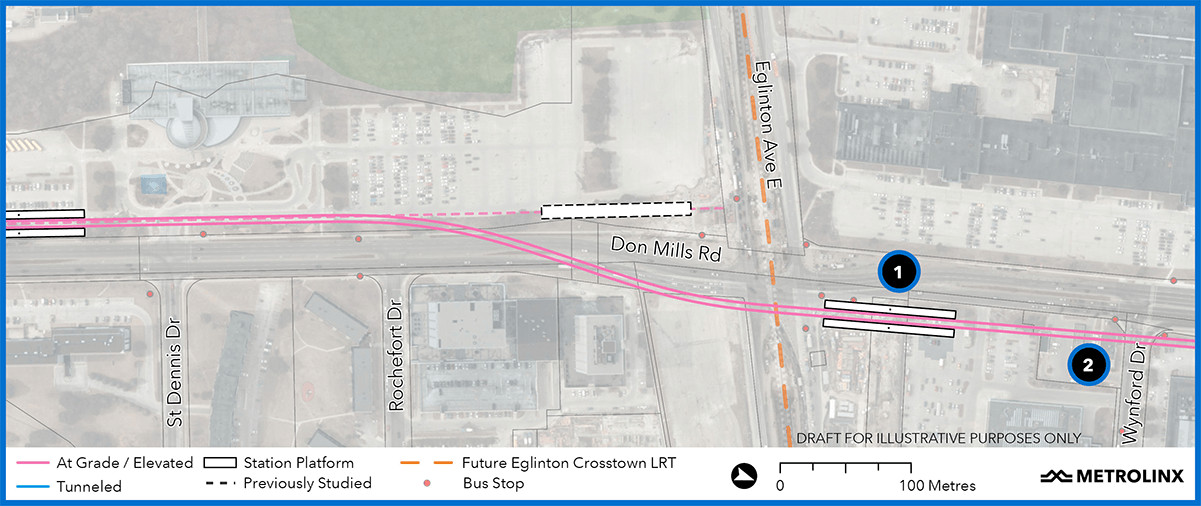Heck, even looking at some of the early station layouts, we can already see some red flags in the design that might cause capacity issues on the Ontario Line in the future.
Notice that Eglinton-Don Mills Station (I refuse to call it Science Centre

) on the Ontario Line is positioned entirely north of the Eglinton Line. Given this positioning, it's most probable that passengers who are transferring from the Eglinton Line to the Ontario Line will be entering the Ontario Line platform from the south side of the OL platform (this is the side closest to Eglinton Avenue). This is a big deal because it will result in poor load balancing on the OL trains. The south end of the train will be over capacity, while the north end of the train is empty. This means that passengers waiting on the south end of platforms at downstream stations (say, at Throncliffe Park or Pape Station), will be presented with totally full cars, and will be unable to board, despite the north end of the train largely being empty. At best, this will reduce the capacity of the line, as some passengers will not be able to board. At worst, this will reduce the capacity
and the headways of the line, as badly behaved passengers hold doors in an attempt to squeeze into stations.
I know this sounds all very academic and nitpicky, but when you're trying to achieve 90s headways, you don't have the luxury of having any stations with poor pedestrian layouts, as this will impact your achievable capacity and headways.
We have a similar situation limiting the capacity of the Yonge Line right here in Toronto. Notice in the below diagram of the Bloor-Yonge station that the Line 2 platforms are at the north side of the Line 1 platforms. This results in passengers transferring from the Bloor Line, to the Yonge Line crowding at the north end of the Yonge Line platform, while the south end remains relatively empty. This causes a load imbalance on the trains, where the north of the train is overcapacity, while the south end is empty (you can see this effect if you watch Yonge Line trains pull into B-Y Station during rush hour). For the same reasons I described above, this culminates in a significant negative impact on the capacity and headways on the Yonge Line.
What this means is that even if the Yonge Line was could run at the 90s headways permissible by the TTC's ATO system, the poor layout of Bloor-Yonge Station alone would make running the trains at this frequency near impossible. And even if they could be run at that frequency, the poor load balancing on the trains would limit the effective capacity of the line, as the northern cars on the train will be over capacity, while the southern end is empty.
View attachment 274918
This highlights one of the reasons why I say 90 second headways, and their theoretically achievable capacities, are very fickle, and should not be depended upon. If those are the frequencies and crowding standards you're designing around, you have zero room to screw around with poorly designed stations and various other factors. It also means that value engineering (which the Ontario Line is susceptible to) could end up throwing away whatever theoretical capacity you
thought you had.
For Eglinton-Don Mills Station specifically, Metrolinx needs to be very careful about how they're handling pedestrian distribution within the station. This is going to be one of the three most used stations of the line, so it is important that they encourage passengers to distribute themselves within the trains in the most efficient manner. Unfortunately the early design suggests that they're going to repeat the design mistakes of Bloor-Yonge Station.
